Have your kids had their dairy 3 a day? MPs, manufacturers and retailers hope so - though, as ever, it’s not quite that simple.
In March, the Dairy All-Party Parliamentary Group, then chaired by Heather Wheeler MP, published the results of its enquiry into the role of dairy in the public health debate. It wrote to the Department of Health to request the implementation of a 3 a day programme for milk and dairy products “to encourage the consumption of dairy products as part of a healthy and balanced diet and to educate consumers of the benefits of dairy”.
For the Dairy APPG, encouraging dairy consumption from a young age is a priority. “Younger generations do not always see dairy as being an essential part of their diet,” it said. “Not only is this a real concern as young consumers miss out on essential nutrients, but it is also bound to weaken long-term demand for dairy. Young girls and teenagers tend to stay away from dairy as they perceive it as being a ‘fatty’ food. Overall, demand for dairy is in significant decline.”
Stern words. With lunchbox numbers down among kids, the 3 a day recommendation could act as a healthy opportunity for innovation and communication. So why is dairy so important for kids? What are brands doing to boost consumption among younger consumers? And will 3 a day become the new 5 a day?
As far as the APPG is concerned, the nutritional benefits of dairy for kids are unquestionable. “Childhood and adolescence are very important stages for mental and physical development. The body goes through extreme changes, including marked increases in height, bone and muscle growth, which result in increased demand for energy and specific nutrients,” says a spokeswoman.
“Dairy products such as milk, cheese and yoghurt are naturally nutrient rich foods and milk, hard cheese and yoghurt are the number one source of calcium in the UK diet. They also contain a wealth of other key nutrients such as protein, riboflavin, vitamin B12, iodine, phosphorus and potassium. Dairy is also an excellent source of iodine. Iodine deficiency is a growing issue for girls and women.”
But the idea that “dairy is good for you” is, says the APPG, no longer obvious to consumers. So it believes the time is right to reiterate the idea, as has been done elsewhere in the world. “Consumers are more and more drawn to natural and healthy products, and an increasing body of scientific evidence is upending longstanding misconceptions about dairy and allowing consumers to enjoy dairy foods guilt-free.”
In the UK, The Dairy Council has targeted children and young people with the Milk It campaign, aimed at active teenagers, and a healthy eating programme in primary schools. Internationally, dairy organisations in both Australia and France have responded to similar opportunities by producing good-humoured promotional campaigns. CNIEL’s N’oublions pas le Plaisir ad (the tagline translates as ‘Do not forget the fun’) emphasises the pleasures and benefits of eating dairy foods. The campaign also has a 3 a day message.
The APPG also received evidence on 3 a day programmes in Ireland, Canada, the Netherlands and the US. “We were convinced that a national 3 a day programme would help promote a healthy lifestyle and balanced diet and bolster dairy consumption,” says the spokewoman.
Government reaction
Unfortunately, the Department of Health did not agree, saying there was insufficient evidence from epidemiological studies to recommend a minimum of three portions of dairy a day. Just a few weeks later Public Health England, a DH agency, slashed recommended dairy consumption by half in its revised Eatwell Guide. “We were sorely disappointed by this decision. Our report was based on robust evidence. It was very frustrating to see that official dietary guidelines would not rely on this,” says the spokeswoman.
Brands, too, have been frustrated. But in many cases, their innovation, reformulation and marketing show they’ve already reached a similar conclusion to the APPG MPs. When it comes to marketing dairy, health rules.
Recent innovations from Arla include Big Milk and Big Yogs. The latter is striking because of its fruit and vegetable flavours, which give an extra shine to the existing dairy halo. Stuart Ibberson, senior director for marketing at Arla, says: “We look at the reports of cross-party groups with interest. Arla is about positioning ourselves as a dairy goodness brand, so this [the APPG report] is in line with our long-term ambitions. But the flip side is the PHE Eatwell Guide. Their recommendation is that you eat less dairy, so there is some joined-up thinking to do from the government.”
Many brands share Arla’s response to the APPG’s recommendations, feeling that they’ve already done plenty of legwork on dairy and health, and are thus poised to participate in the debate - and shift their dairy snacks.
“We really welcome all the thinking around healthy eating and a balanced diet, although we wouldn’t push messages such as the APPG’s on pack,” says Chloé Féminier, head of insight and planning at Bel UK. “We take it as a cue that there’s an opportunity for more variety around cheese products. That’s a good thing for us.”
The kids dairy market

Value sales are down in kids yogurts (-4.9%), kids cheese spreads (-5.6%), and milkshake drinks (-7.4%) in the big five. Kids cheese snacking is up 8.9%.
Pots are declining ahead of handheld in kids yoghurts. Some brands are suffering as a result of range rationalisation and the war on sugar.
Handheld yoghurt growth is being driven by Yollies, Petits Filous and The Collective. These brands play to consumer trends around naturalness, novelty formats, standout packaging, out-of-home eating and health.
Strong licensed brands continue to be drivers of growth in kids yoghurts. However these products have short lives (eg Minions, Disney Frozen, Star Wars).
Strong growth in kids snacking cheese has been driven by heavy promotional support and fewer distribution losses compared with the rest of the cheese category, as well as healthy snacking trends and the growth of out-of-home eating.
Sugar concerns are likely to underlie the declining popularity of some brands in the milk drinks space. Brands like Frijj have responded to this with low-sugar alternatives.
Arla Big Milks have been successful in moving some toddler milk sales into the chilled sector.
The Eatwell Guide may not support increased dairy consumption, but Public Health England has at least made one recommendation likely to benefit producers of fortified dairy products, including Arla and Yoplait. The Scientific Advisory Committee on Nutrition’s report on Vitamin D was published in July and recommends everyone of 12 months and over should have a dietary intake of 10 micrograms a day of vitamin D.
Brands such as Yoplait are already on it: vitamin D fortification on Frubes and the core Petits Filous range was increased this year.
“It’s in our kids portfolio that we focus most on telling a health story. From the very beginning we have communicated a strong bones message on Petits Filous,” says Yoplait kids marketing manager Rahul Gursahani. “The SACN report recommended children increase their vitamin D intake, underlining why fortified dairy products are so important to kids.”
It’s not surprising brands have made these moves. Health is, of course, a macro-trend across grocery, and something adult dairy products, such as big pot natural and Greek yoghurt, have benefited richly from - plain big pot is in 11.7% value growth [Kantar Worldpanel 52 w/e 22 May 2016].
But while overall yoghurt and fromage frais occasions are up 2.2%, kids occasions are growing more slowly at 0.6% [Kantar]. And there have been some marked differences in brand fortunes.
Sugar plays a key role here, says IRI client team leader Kate Gooch. “Some traditional kids yoghurt pots brands are suffering from the challenges of range rationalisation and base decline that is likely to be in part driven by consumers moving away from sugary foods,” she says.
Brand value losers in the kids category include Rachel’s Organic, down a painful 28.7%, and Müller, which has dropped 34.9%. The latter has acted decisively, reformulating its Kids Corner sub-brand to contain 50% less added sugar from this month. “The reformulation taps directly into the increasing demand for consumers to lower their sugar consumption, particularly within the kids category,” says Bill Mathieson, Müller yoghurt and desserts commercial director.
Meanwhile, Yoplait says it’s dropping sugar and will continue to do so. Significantly, recent Petits Filous launches My First Petits Filous and Natural 400g are low sugar or no added sugar. Gursahani says: “Part of the role of industry is to keep innovating to ensure that the category stays fresh, exciting and relevant. Only then can we get closer to helping people consume three portions of dairy a day. This means new improved formats, flavours, portion sizes and eating occasions.”
My First Petits Filous
Launched : February 2016
Manufacturer : Yoplait
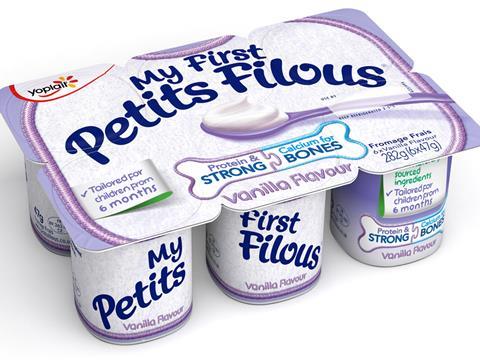
A new weaning product designed to help introduce children to fromage frais from six months. With 4.8g sugar per 100g, they are made using 100% naturally sourced ingredients and are rich in calcium and protein to help young children develop strong bones. (rsp: £1.59 / 47g).
Pepperoni Pizza Dairylea Lunchables Stackers
Launching : April 2016
Manufacturer : Dairylea
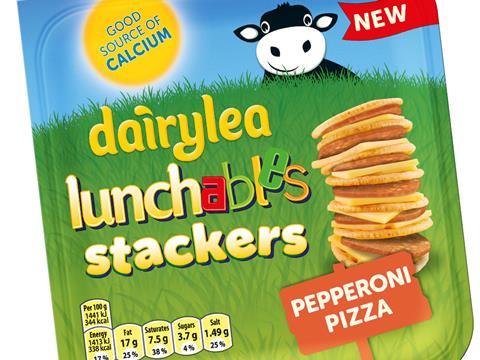
The latest addition to Dairylea’s Lunchables kids snacking brand, which has enjoyed strong growth over the past year (rsp: £1.65).
Cheestrings Minis
Launched : June 2016
Manufacturer : Kerry Foods
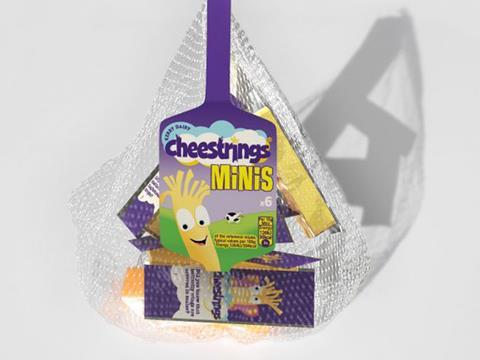
Kerry is hoping to build on the success of its Cheestrings brand with a new mini variant targeted at three to five-year-olds. They are available in bags of six 10g packs in original and Emmental variants (rsp: £1.35).
Banana Suckies
Launched : August 2016
Manufacturer : The Collective
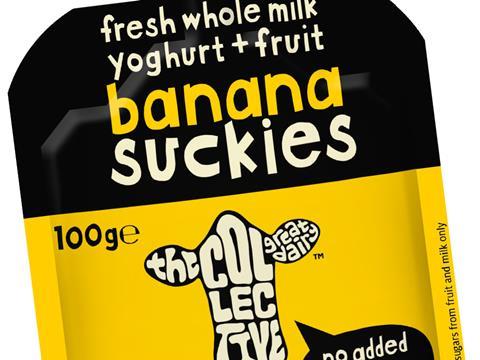
This is the fifth flavour to join The Collective’s Suckies lineup of gourmet kids yoghurt pouches. The whole range was reformulated in July, and now contains 20% less sugar at 9.4g per 100g (rsp: 79p/100g).
The Collective has also cut sugar in its Suckies range by 20%, and it now contains only naturally occurring sugars from milk and fruit. “Dairy and yoghurt is a nutritious eat, and more kids having more dairy is a good thing for us,” says founder Amelia Harvey.
Kerry Foods’ handheld yoghurt lollies are in mighty 67.9% value growth [IRI], with a single format launched in August this year as an on-the-go snack option with dairy credentials. “Mums are particularly attracted by the fact Yollies are packed with calcium and vitamin D,” says Alison Lees, marketing manager for kids dairy at Kerry Foods. “We call out the relevant benefits on pack. Yollies are also not included in the list of HFSS [high fat, salt and sugar] food that should not be advertised to children.”
Milk drinks, where sugar is a particular issue, have struggled this year despite some reformulations; Actimel for Kids, Frijj and Moo have all seen double-digit value losses [IRI].
Bucking the trend is Arla’s Big Milk, which has sold £3.8m since launch in April 2015 and moved some toddler milk sales into the chilled sector. “There’s no compromise - it tastes exactly like normal milk but has all the benefits in terms of giving kids the vitamins and minerals they need,” says Ibberson.
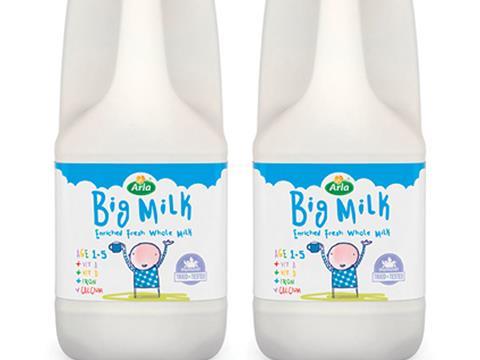
The brand’s reduced-sugar flavoured milks, however, were withdrawn following poor performance. “What we’ve learnt is that when consumers are looking for healthy products, just to be lower in sugar isn’t necessarily what they’re after. If we’re honest with ourselves, was there a bit too much compromise on taste?”
Yoplait’s Frubes drinks launch, meanwhile, combines on-pack calcium health messages with the brand’s favoured licensed characters. “For Frubes it’s about family fun,” says Yoplait’s Gursahani. “Through our partnerships around Minions and Angry Birds we have been able to create excitement via competitions, games and experiences.”
With demand for high protein and fortified foods growing, there may be further room for innovation in kids’ milk drinks, adds Gooch.
Cheese snacking
While Cheddar’s long-term decline is reflected in a 0.7% drop in children’s occasions, kids are crucial to cheese snacking. Kids cheese snacking is up 13.2% in value on volume up 19.9% [Kantar], while the adult subcategory remains stagnant. IRI’s Kate Gooch observes that heavy promotional support and relatively limited distribution losses have driven strong category performance.
Mondelez’s Dairylea dominates the kids cheese snack category and has enjoyed the strongest growth, up 11.7% in value [IRI].
A reformulation on all but its Triangles products, along with a new pack design that highlights the new recipe, launched on 6 June. It’s too early to tell how the move has affected sales, but most products can now be described as a good source of calcium.
Kerry’s Cheestrings is another strong performer, with value up 6.5% and latest innovation including single and mini formats. “Healthy snacking trends, including the growing focus on protein, and the growth of out-of-home eating occasions, are likely to be contributing to the underlying demand for kids cheese snacking,” says Gooch.
Dairy Partners recently relaunched its Simpsons string cheese and launched Cheese Peelers, both made from mozzarella, rather than processed cheese, using UK milk. For director Robert Peel, provenance and process is as much a draw as health, though he says the company supports the idea of dairy 3 a day.
“We aim not to target kids. We do things that may be perceived as more universal”
- Chloé Féminier, Bel UK
Meanwhile, Dairy Crest’s kids cheese snacking range Chedds, which lost 0.6% in value year-on-year, has been taken back under the Cathedral City umbrella, blurring the boundaries between kids and adults snacking on lines including its new Mild and Mature Lighter mini variants.
Creating and marketing dairy products for kids is, says Norseland’s brand manager Lisa Harrison, a particular challenge. “We need to create something kids love to eat but which also fits with their parents’ priorities, including nutritional value and value for money.”
Some child-friendly cheese brands face the added complication of ad limits on HFSS products. Mini Babybel, which grew value by 2.8% this year on a corresponding volume rise [IRI], falls into this category. “We really aim not to target kids,” says Bel UK’s Chloé Féminier. “We do things that may be perceived as more universal, supporting football or Comic Relief. Our current campaign is Supercheese, talking about a natural cheese rich in calcium and protein and 98% milk.”
Securing featured space is, she says, competitive, but the brand is testing clip strips in the fruit and lunch-to-go aisles.
Like other brand planners, Féminier says there’s a long way to go - not least technologically speaking - before the mults’ new health-led checkouts feature chillers bursting with dairy products. But aligning dairy snacks with fruit - the ultimate in healthy snacking - is a step in that direction, and another sign brands are already thinking what MPs are thinking about kids and dairy.
Topics
The Dairymen 2016: an action plan for British dairy
- 1
- 2
- 3
- 4
- 5
- 6
- 7
- 8
- 9
- 10
- 11
- 12
 Currently reading
Currently readingDairy for kids: how to build good habits
- 13
- 14
- 15
- 16
- 17
- 18
- 19
- 20
- 21



























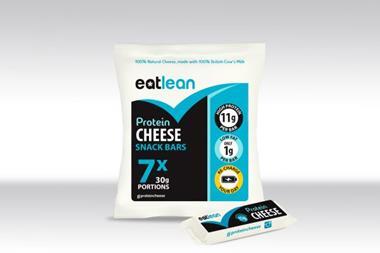
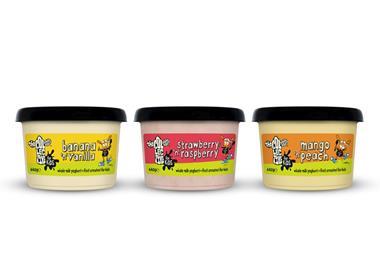

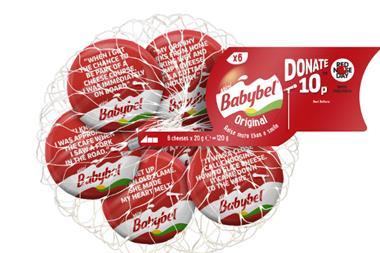








No comments yet